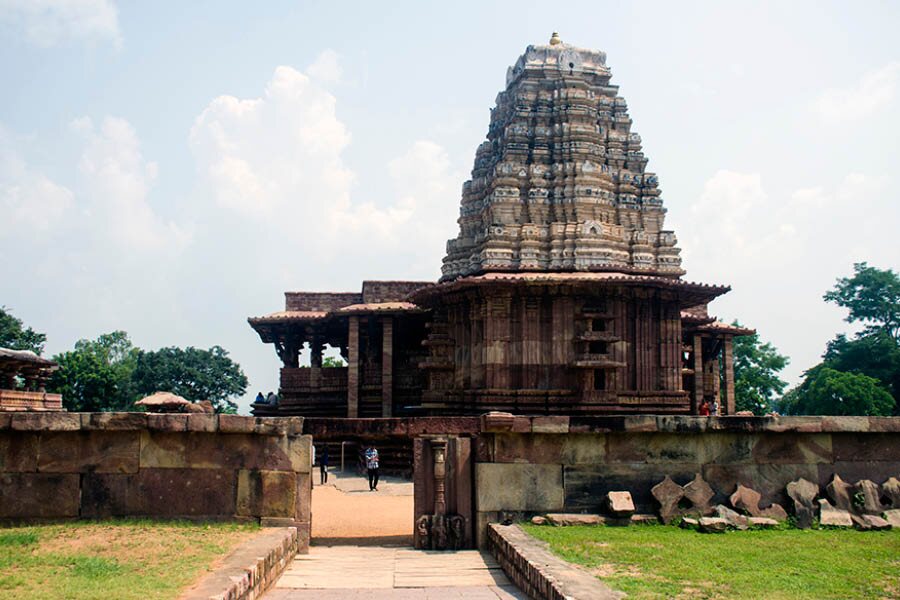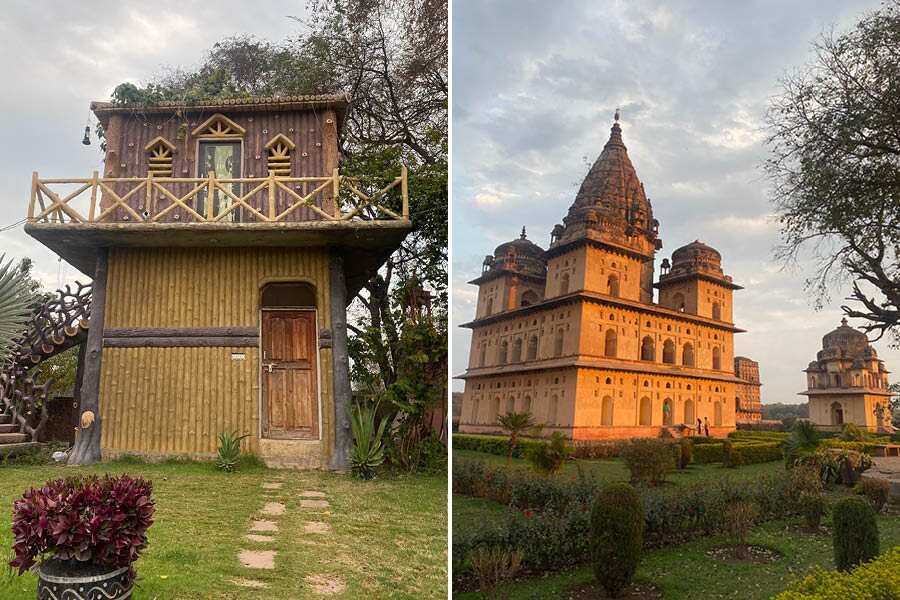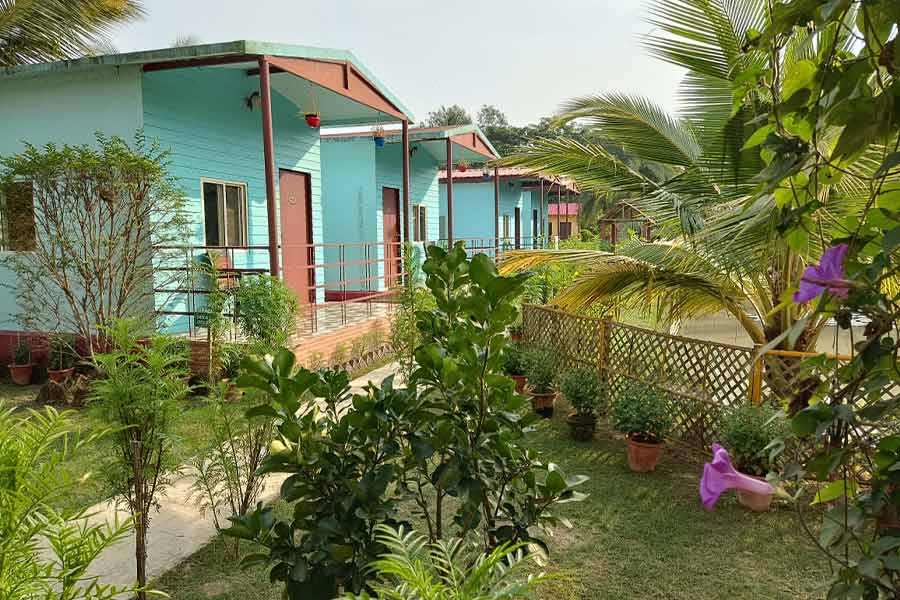A dozen elegant female dancers striking different poses will welcome you to the temple. Each with their flowing clothes, intricate jewellery and not to mention the amazing facial expressions. These all will be the part of the grand entry. This is Ramappa Temple (also known as Rudreshwar Temple), Palampet village, Mulugu district of Telangana.

Panoramic view of the Ramappa temple complex. (From left to right) The main temple, inscription pavilion and the northern temple
The statues of dancing girls (known as mandakinis) are made of black basalt stone polished to perfection. Each of the three gates has a pair of dancing girls on each side, thus making four dancing girls per gate and the number of dancing girls totals to 12.
The temple dates back to 1213 and was constructed during the reign of the Kakatiya king Ganapati Deva. It was constructed by Recherla Rudra, the general of Ganapati Deva. The temple is named after Ramappa, the chief architect of the temple.
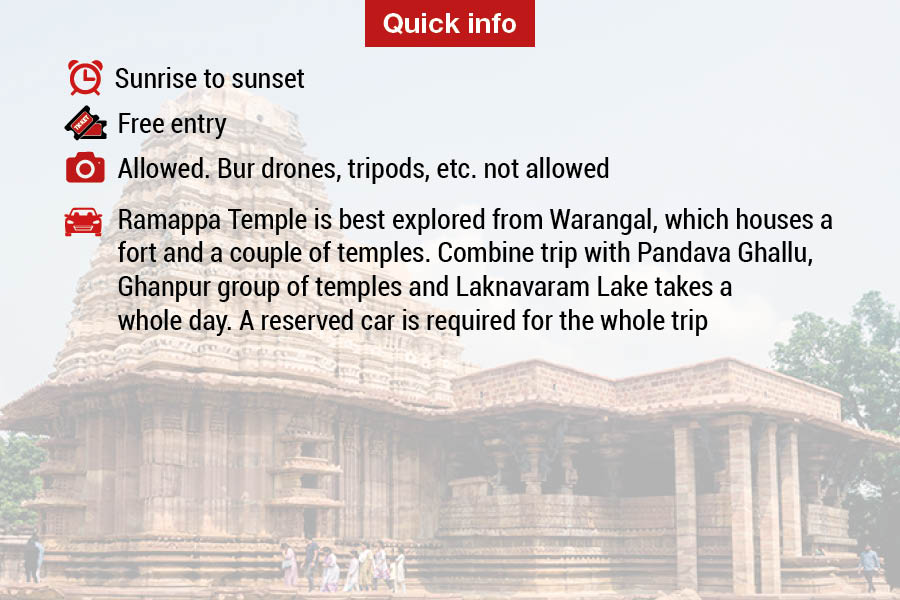
In 2021, the Ramappa Temple was declared as a UNESCO World Heritage Site. Today, the temple is located about 66km from Warangal and 220km from Hyderabad. A tree-lined pathway leads to the temple complex. The walled complex can be accessed through a small gate on the western side.
The temple faces east and is dedicated to Shiva. The temple has a star-shaped plan and stands on a six-feet high plinth. Three flights of stairs lead to the three gateways facing east, north and south. The cornice above the three gateways is supported by black basalt brackets in the shape of dancing girls. The remaining part of the cornice are supported also by black basalt brackets representing the mythical animal yalli (a cross between lion and elephant).
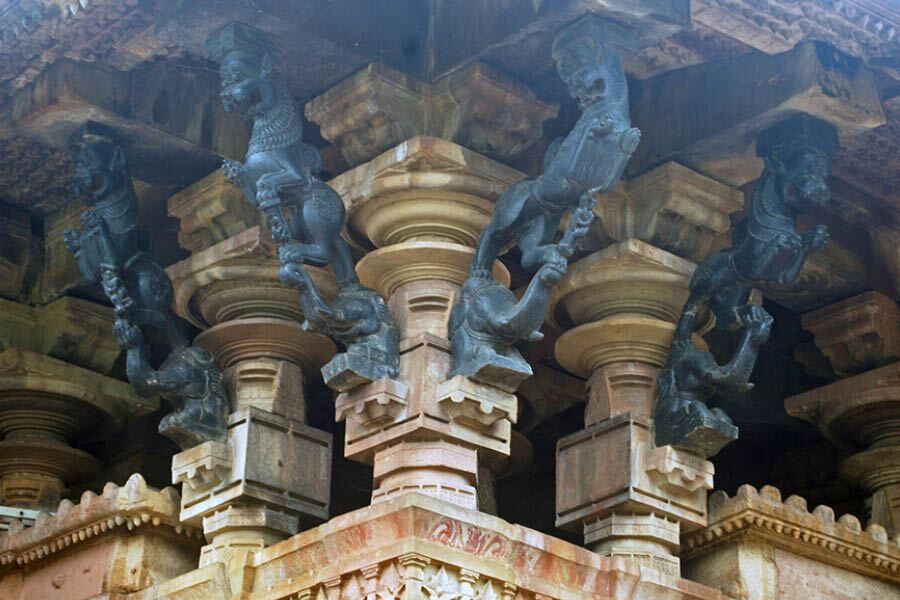
Yalli (mythical animal) brackets made of black basalt stones supporting the cornice
The temple is made of reddish sandstone and has beautiful ornamentation on its outer wall. The temple comes in with a decorative spire made of specially designed bricks, which are supposed to float in water. The interior houses a shiva linga in the inner sanctum, entered through an ornamental gateway made of shining black basalt stone. Basalt pillars with intricate ornamentation support the roof of the open space in front of the inner sanctum.

Ganesh statues displayed in the temple complex
The walled complex houses several other structures including two Shiva temples. These are located north and south of the main temple. Nothing much is left of the south temple but northern counterpart still stands with its collapsed spire. The temple is a scale down version of the main temple with the missing basalt brackets. But it does have a basalt Nandi bull statue in its interior. The statue is complete with ornamentation and has a broken nose and mouth.
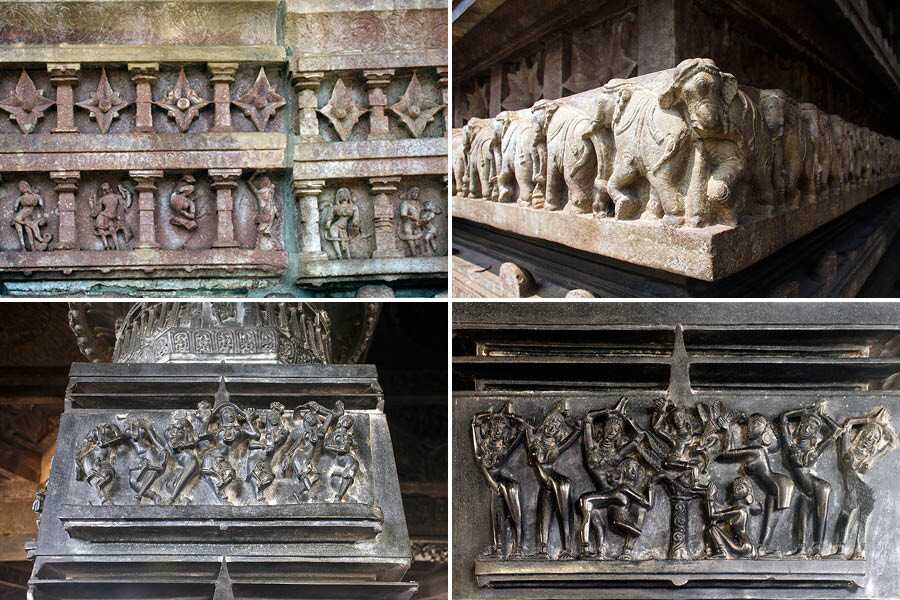
Ornamentation from Ramappa Temple. (Top row) Sandstone ornamentation from temple exterior and (row above) black basalt stone ornamentation from temple interior
Apart from the two minor temples the complex also houses a Nandi mandap. It is located east of the main temple. Although the roof of the mandap has long collapsed but the Nandi statue, facing the temple. stands in full glory. Made of shinning black basalt stone the Nandi statue is complete with ornaments and a bell hanging from its neck. In between the northern shrine and the Nandi mandap stands a small but elegant pavilion housing a pillar. The pillar has an inscription narrating the history of the Ramappa Temple.

The Nandi ‘mandap’ and (right) the Nandi statue
